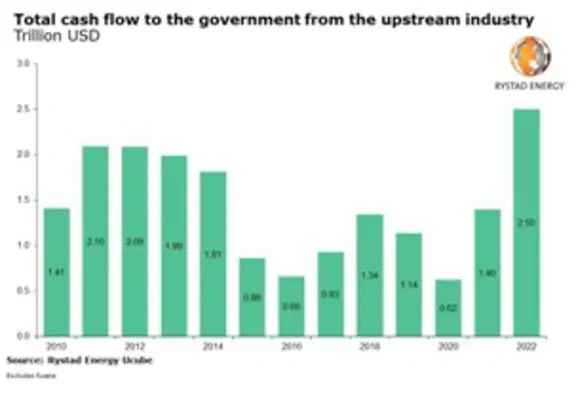Sustained high commodity prices and increasing oil and gas supply are set to push upstream sector payments to governments to an all-time high of US$2.5 trillion this year, with Saudi Arabia topping the list in terms of total cash flow to government from the sector, according to Rystad Energy research
The top 10 list is dominated by Middle Eastern producers, with Saudi Arabia expected to receive just above US$400bn from its cornerstone industry this year, an increase of almost US$250bn from 2021. The USA, when including royalties paid to private landowners, takes second spot with around US$250bn paid to government, an increase of US$100bn compared to 2021. Iraq follows with about US$200bn in total tax income, a doubling of its income compared to 2021. Saudi Arabia is followed by the USA and Iraq, with government take varies considerably between nations, however, with Norway and Iraq seeing an average take per produced barrel of oil equivalent (boe) of around US$100, while for the likes of the USA and Canada the figure is below US$20 per boe.
Total tax income in 2020 was just above US$600bn as low oil and gas prices and production cuts due to the outbreak of the Covid-19 pandemic early in that year sent such income to one of the lowest levels this century. Total tax income increased last year to US$1.4 trillion, with higher commodity prices being the main driver behind the rise.
“The leap to a record high in revenues is being driven by a combination of high oil and gas prices and lower costs. A year ago, it looked like the era of trillion-dollar revenues might have been behind us. Today it is clear that we are heading into a super cycle that will benefit petrostates. These record revenues present an unparalleled opportunity to diversify economies,” said Espen Erlingsen, head of Upstream Research at Rystad Energy.









